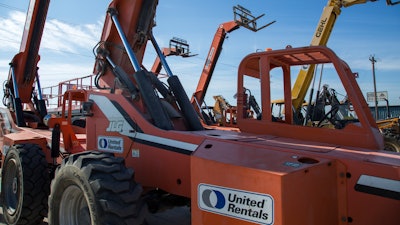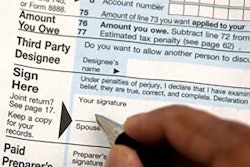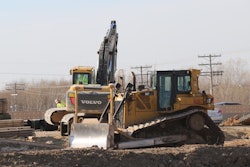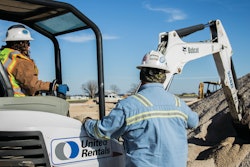
Last month, we discussed how you could get better control of the equipment you own and rent. This month, we’re going a step further by offering up a couple of ways to collect and analyze the data.
There’s no doubt in my mind that rental as a percentage of equipment usage is going to increase. There are more rental alternatives coming on board every day, giving contractors more flexibility when it comes to owning vs. renting.
In the example shown at right, I’m using an American Rental Association equation to demonstrate how a rental center measures rental activity per unit. Most of the data you would plug into this equation may be on your books already and only requires some moving around to get into the “rental mode.” This data can then be used to compile a monthly “rental” activity report once the financial statements are completed.
Having this data available can help you improve productivity, reduce downtime, reduce maintenance and parts costs, improve your bid process, clean up the balance sheet and, my favorite metric, increase cash flow — all by reducing the need to buy equipment.
How to Calculate Costs Per Unit
Make up a list of owned equipment and assign a number to each “countable” unit. This is equipment that has meaningful cost and maintenance numbers, not the nuts and bolts. Be sure to note the original cost next to the number assigned. (This information should be in your internal or tax depreciation schedule.)
In terms of the revenue, equipment should be billed as a separate line item and the equipment number noted as part of the invoice. Then, track billing by unit each month.
As far as direct costs, depreciation could be your biggest number. It should be .83% of cost per month if using 10% per year for book depreciation.
- Identify those units under lease payments; they do not belong in your depreciation schedule.
- Make-ready and repair labor should appear on an internal work order with the unit number noted. The shop manager needs to review that this is being completed. Likewise, parts invoices or parts removed from inventory should be on a work order with the unit number noted.
- If you spend a lot on delivery and pick-up of units, calculate an hourly rate for the truck and driver. If an outside source is used, note the unit number of the equipment being moved on the purchase order and invoice.
- Any other direct costs can be accounted for without a unit number.
- Interest expense relates to total interest for owned construction equipment selected to be included in this calculation.
So, what to do you wind up with? The internal rental revenue billed less the depreciation, lease payments, make-ready and repairs, vehicle costs, other direct expenses and interest expense. But in order to draw conclusions, you need the rental company rates (current) for all the types of units on your list.
Billing Over Cost — or Cost Over Billing
If you have billing over cost, it means you are covering your direct costs and have the flexibility to own and have the unit available when you need it. But you will incur many of the above costs for the entire year, which could move the billing-over-cost number to a cost-over-billing result. Also, don’t forget to compare your cost to an outside rental rate. On an annual basis, it may be cheaper to rent.
If cost for the month is higher than the billing, please review a rental alternative.
Let’s keep in mind that you are tracking all owned units selected for this exercise, and even though you have some billing-over-cost results, there may be units sitting that offset that profit. The option here is to right-size the fleet to where you are most likely to be in a billing-over-cost scenario at the end of the year.
I suggest you ponder what I’m telling you and at least get that list put together with the unit costs on them. Next, get the cost data from your AP and HR departments. Then, call me if you have any questions.
Interested in learning more on financials? Attend the Ignite Construction Summit — the construction industry’s only conference and networking event for construction business owners and high-level managers — November 3 to 5, 2021, to hear from Garry Bartecki on these issues and more!


















